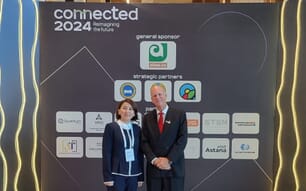The case study will act as a foundation for recommendations to the aquaculture community for better shrimp-farming practices.
The crux of the case study is a comprehensive survey of shrimp farms in six countries in Asia and Latin America that consistently achieve good results even though neighboring farms are impaired by EMS. The survey results will be entered into a database from which hypotheses will be formulated regarding the proper management of EMS. The hypotheses will then be tested in the field.
The survey results will also be summarized in a report and presented at GAA’s GOAL 2014 conference in Ho Chi Minh City, Viet Nam, from October 7 to 10.
The hope is that identifying the common denominators of proper management will lead to the adoption of better shrimp-farming practices industrywide. EMS, which first emerged in China in 2009, is costing the industry in excess of $1 billion annually.
The project is being supported primarily by ALLFISH, a World Bank public-private partnership organized by the International Coalition of Fisheries Associations, in the form of a $100,000 grant. The Seafood Industry Research Fund is also supporting the project.
“In order to properly address this disease, aquaculture’s leading researchers will come together in March to design a survey of farms across the entire range of the disease to determine best practices for managing EMS,” said GAA President George Chamberlain.
The project’s first step is to establish a committee of about 10 international experts, who will analyze the survey results and formulate the hypotheses for further testing. This committee is currently being assembled and is convening in Vietnam later this month. A checklist for the survey will be developed to assure consistency in evaluation of pond management methods. Qualified auditors will then be dispatched to shrimp farms in China, Vietnam, Malaysia, Thailand, Mexico and India - particularly in areas greatly affected by EMS - to gather survey data.
The fourth step is to collect the survey results for input into a database, which the committee will review and formulate into hypotheses. Finally, the data will be complied for a written report to be presented to the aquaculture community through GOAL 2014, GAA’s Global Aquaculture Advocate magazine and other outlets.





